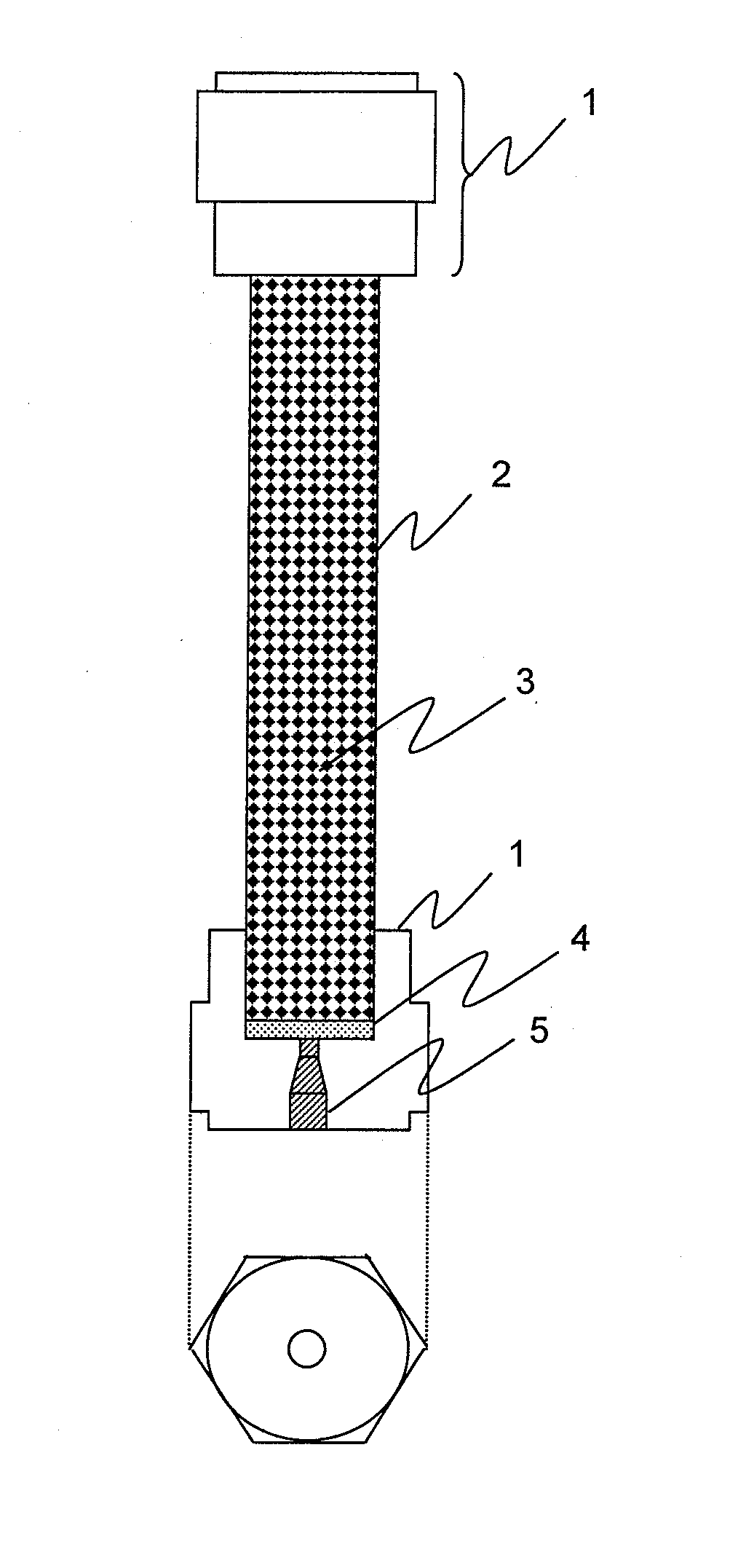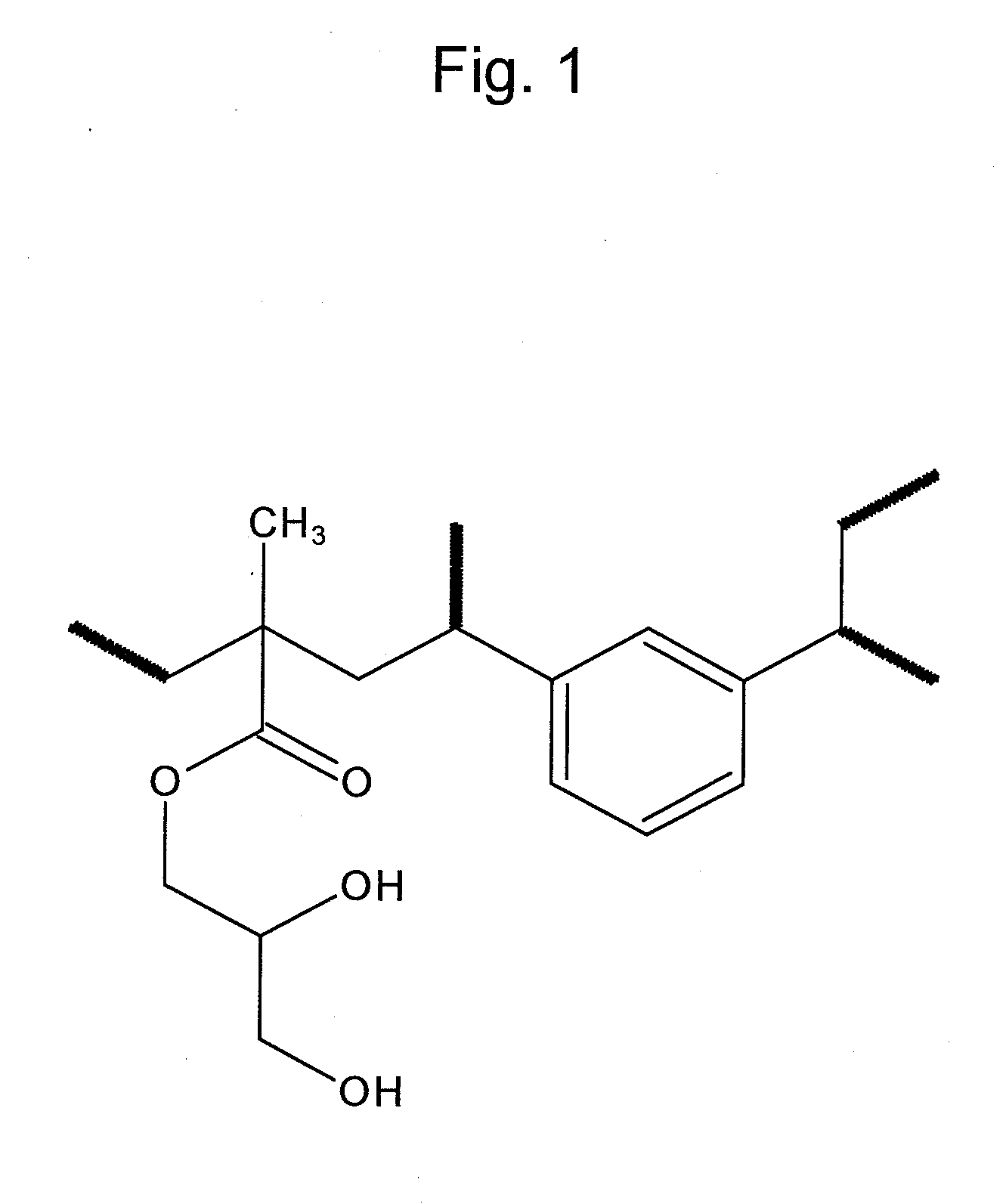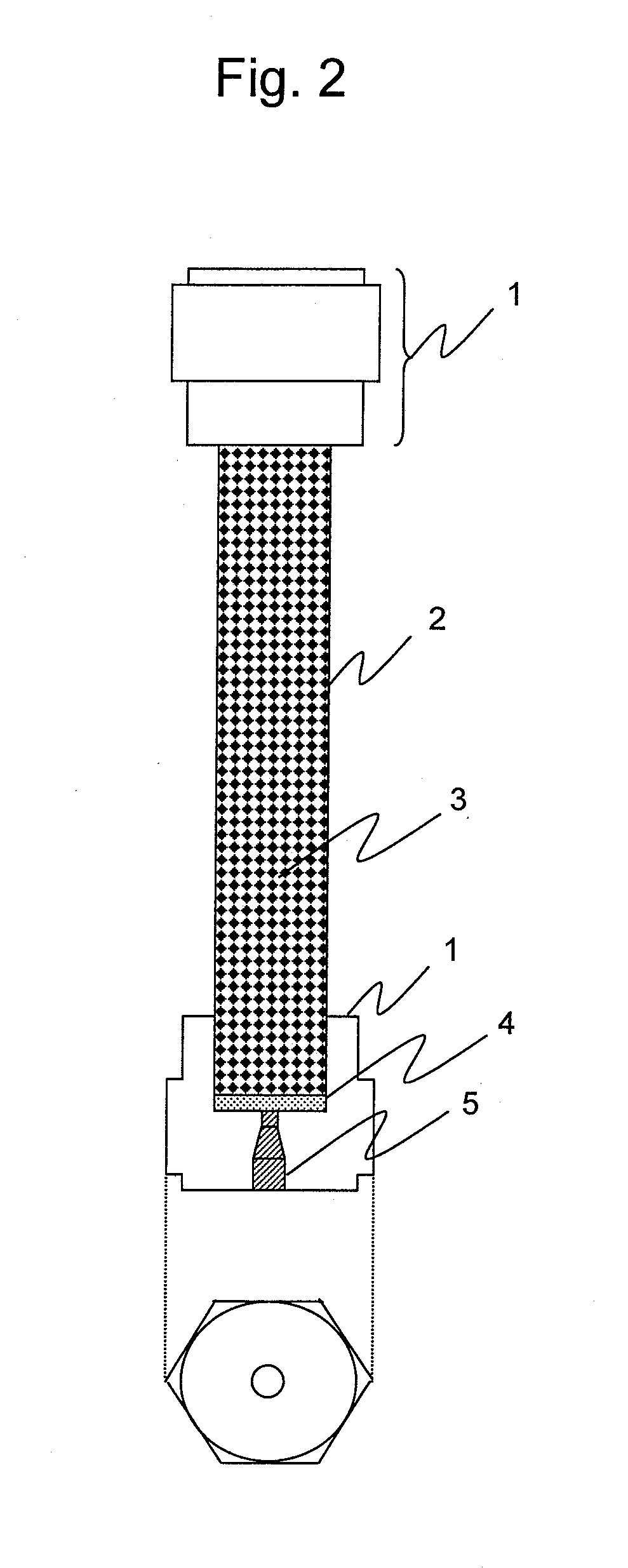Method and apparatus for analysis of poly (biphenyl chloride) in electrical insulating oil
a technology of biphenyl chloride and electrical insulation oil, which is applied in the direction of ion exchange treatment, separation process, water/sewage treatment, etc., can solve the problems of insufficient sensitivity, high labor intensity, and requiring about 2 days of pretreatment per day, so as to facilitate automation and facilitate separation of pcbs from oil content , the effect of labor saving
- Summary
- Abstract
- Description
- Claims
- Application Information
AI Technical Summary
Benefits of technology
Problems solved by technology
Method used
Image
Examples
example 1
[0061]FIG. 2 shows a column packed with a pretreatment agent comprising particles of a copolymer that contains divinylbenzene and a methacrylate organic polymer. Both ends of a pipe 2 are sealed with a screw-type column end 1, so that a pretreatment agent 3 packing the pipe 2 is locked therein so as not to form any empty space. When particles are mixed as impurities within an insulating oil sample, filters 4 are used for the both ends of the pipe 2, so as to prevent the particles from being mixed in the layer of the pretreatment agent 3. Meanwhile, a liquid enters the pretreatment agent 3 via a threaded hole for tube connection 5, which is produced for connection to a liquid chromatograph.
[0062]FIG. 3 shows an operational flow chart for analyzing PCBs in insulating oil, whereby the operational flow chart of the present invention is compared with that of the disclosed method. The disclosed method is the sole method by which PCBs (in waste oil) at the same level as or lower than the r...
example 2
[0067]FIG. 6 shows an operational flow chart for analyzing PCBs in insulating oil in Example 2. In this Example, degradation treatment of oil components and concentration treatment are not performed prior to cleanup, but all steps ranging from weighing of an insulating oil sample to measurement with a gas chromatograph are performed automatically. FIG. 7 is a schematic view showing the configuration of an analyzer for PCBs in insulating oil for such automatic procedures. In particular, FIG. 7 shows a separation and refinement part for separation of PCBs in insulating oil from oil content. FIG. 8 is a schematic view showing the configuration of an analytical part of an analyzer for PCBs in insulating oil and particularly showing an analytical part for measurement of PCB concentration in insulating oil that has passed through the separation and refinement part.
[0068]0.1 g of an insulating oil sample diluted with n-hexane is injected using the autosampler 9 into a liquid chromatograph ...
example 3
[0070]As another example, a method for performing cleanup without using a liquid chromatograph is as described below. A pretreatment agent comprising particles of a copolymer that contains divinylbenzene and a methacrylate organic monomer as monomer components is added together with an appropriate solvent into a glass vessel such as a beaker. An insulating oil sample is added to such a vessel and then stirred for a certain time at a certain temperature, so that only PCBs in the sample are retained in the pretreatment agent. Then the pretreatment agent is separated by filtration and treated with a solvent for desorption of PCBs from the pretreatment agent, so that PCBs are recovered and measured, or PCBs are recovered by heating and then measured.
[0071]Alternatively, a glass tube is packed with a pretreatment agent and then insulating oil is retained therewithin. A fiber surface is coated with the pretreatment agent and then immersed in the insulating oil, so that PCBs in the insulat...
PUM
| Property | Measurement | Unit |
|---|---|---|
| particle diameter | aaaaa | aaaaa |
| particle diameter | aaaaa | aaaaa |
| particle diameter | aaaaa | aaaaa |
Abstract
Description
Claims
Application Information
 Login to View More
Login to View More - R&D
- Intellectual Property
- Life Sciences
- Materials
- Tech Scout
- Unparalleled Data Quality
- Higher Quality Content
- 60% Fewer Hallucinations
Browse by: Latest US Patents, China's latest patents, Technical Efficacy Thesaurus, Application Domain, Technology Topic, Popular Technical Reports.
© 2025 PatSnap. All rights reserved.Legal|Privacy policy|Modern Slavery Act Transparency Statement|Sitemap|About US| Contact US: help@patsnap.com



